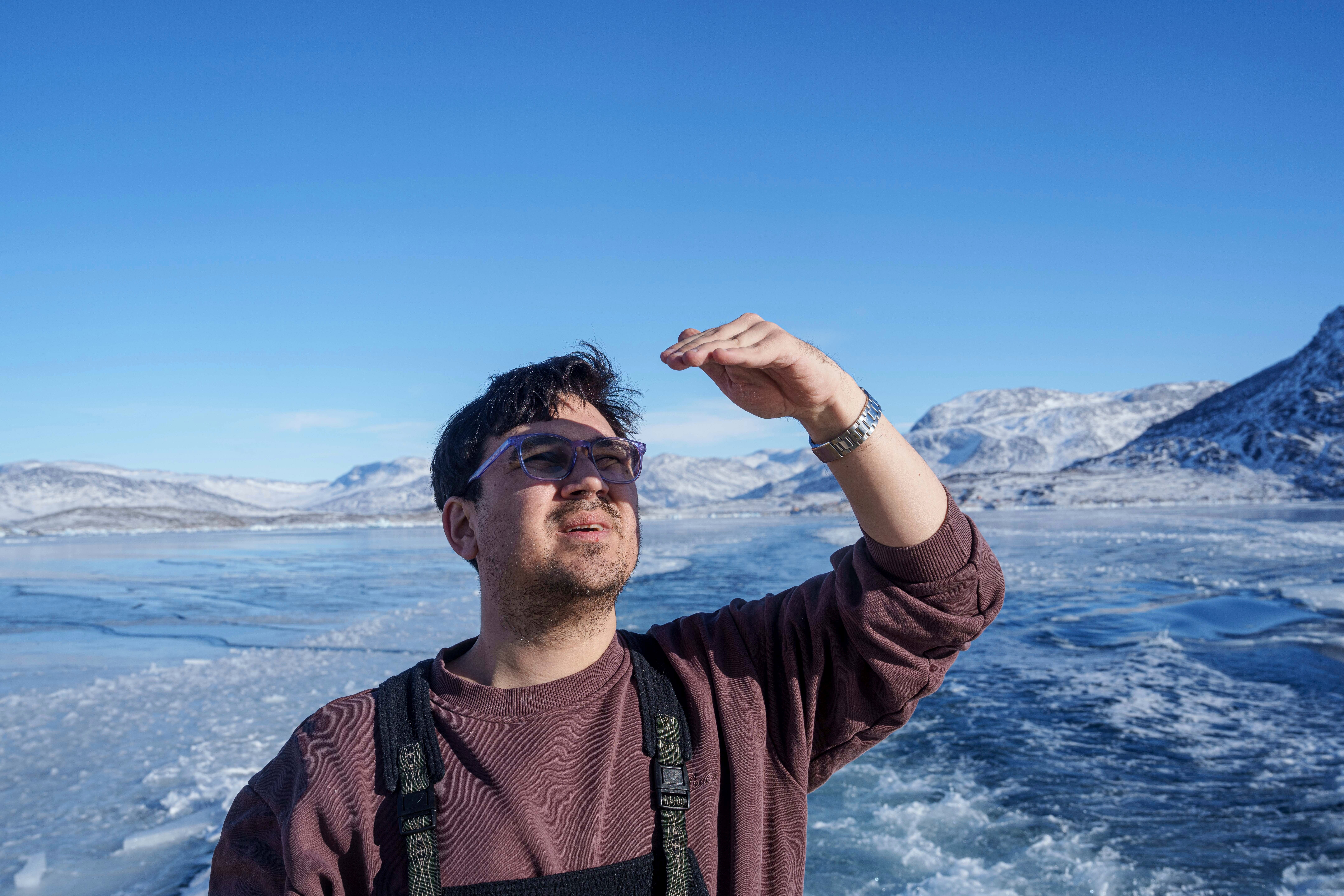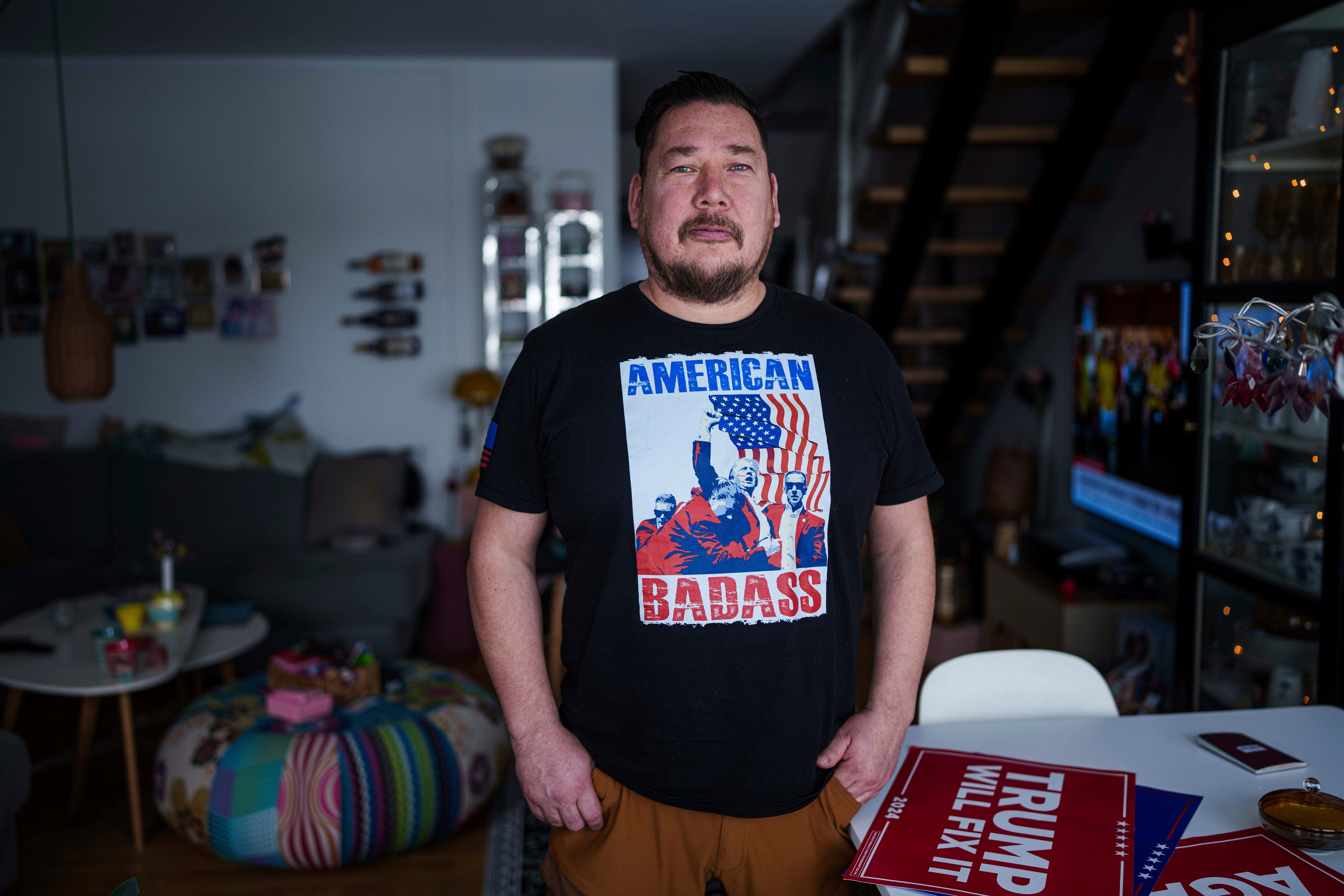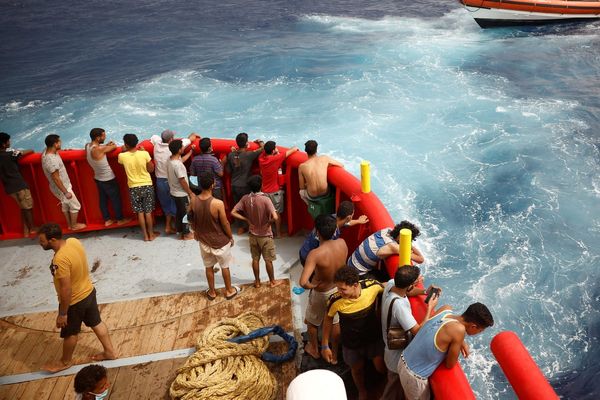In Greenland, Lisa Sólrun Christiansen wakes up at 4am most days. She then gets to work knitting thick wool sweaters, with colourful patterns celebrating the territory’s Inuit culture, for buyers around the world.
Her morning routine also involves a quick check of the news. But nowadays, that shatters her peace, as it often contains articles about President Donald Trump’s interest in her homeland.
The 57-year-old artisan, whose father designed the Greenlandic flag, feels a deep connection to the island and her father's dying wish for the flag to unite its people. Now, that unity is threatened by geopolitical tensions.
“I get overwhelmed,” she says.
Greenlanders are increasingly anxious about their homeland's role in the power struggle between the US, Russia, and China as the Arctic becomes more accessible due to global warming.
Trump's stated aim to acquire Greenland, rich in minerals and strategically located, is seen as a potential roadblock to the island's independence from Denmark.
These concerns escalated with the announcement of visits by Usha Vance, wife of Vice President JD Vance, to attend Greenland's national dogsled race, and by National Security Adviser Michael Waltz and Energy Secretary Chris Wright to a US military base in northern Greenland.
This follows Trump's recent reiteration of his desire to annex Greenland, just days after the election of a new parliament opposed to US control.

Trump's veiled reference to increased military presence in Greenland further fueled anxieties when he spoke of US bases in the territory and remarked “maybe you’ll see more and more soldiers go there.”
The visits have sparked immediate criticism from local politicians, who view them as a US power play during a sensitive time of government formation. For Greenlanders like Christiansen, the future of their homeland and its unique cultural heritage hangs in the balance.
"It must also be stated in bold that our integrity and democracy must be respected without any external interference,'' outgoing Prime Minister Múte Boroup Egede said.
Greenland, part of Denmark since 1721, has been moving toward independence for decades. It’s a goal most Greenlanders support, though they differ on when and how that should happen. They don’t want to trade Denmark for an American overlord.
The question is whether Greenland will be allowed to control its own destiny at a time of rising international tensions when Trump sees the island as key to US national security.
David vs Goliath
While Greenland has limited leverage against the world’s greatest superpower, Trump made a strategic mistake by triggering a dispute with Greenland and Denmark rather than working with its NATO allies in Nuuk and Copenhagen, said Otto Svendsen, an Arctic expert at the Center for Strategic and International Studies in Washington.
Trump’s actions, he says, have united Greenlanders and fostered a greater sense of national identity.
“You have this feeling of pride and of self-determination in Greenland that the Greenlanders are not, you know, cowed by this pressure coming from Washington,” Svendsen said. “And they’re doing everything in their power to make their voices heard.”
Denmark recognized Greenland’s right to independence at a time of its choosing under the 2009 Greenland Self-Government Act, which was approved by local voters and ratified by the Danish parliament. The right to self-determination is also enshrined in the United Nations charter, approved by the US in 1945.
US national security
But Trump is more focused on the economic and security needs of the US than the rights of smaller nations. Since returning to office in January, he has pressured Ukraine into giving the US access to valuable mineral resources, threatened to reclaim the Panama Canal and suggested that Canada should become the 51st state.
Now he has turned his attention to Greenland, a territory of 56,000 people, most from indigenous Inuit backgrounds.
Greenland guards access to the Arctic at a time when melting sea ice has reignited competition for energy and mineral resources and attracted an increased Russian military presence. The Pituffik Space Base on the island’s northwest coast supports missile warning and space surveillance operations for the US and NATO.
Before Trump’s re-election, Greenlanders hoped to leverage this unique position to help the country achieve independence. Now they fear it has made them vulnerable.
Cebastian Rosing, who works for a water taxi firm that offers tours around the Nuuk fjord, said he’s frustrated that Trump is trying to take over just as Greenland has begun to assert its autonomy and celebrate its Inuit origins.
“It’s so weird to defend (the idea) that our country is our country because it’s always been our country,” he said. “We’re just getting our culture back because of colonialism.”

Strategic importance
It’s not that Greenlanders don’t like the US. They have welcomed Americans for decades.
The US effectively occupied Greenland during World War II, building a string of air and naval bases.
After the war, President Harry Truman’s government offered to buy the island because of “the extreme importance of Greenland to the defense of the United States.” Denmark rejected the proposal but signed a long-term base agreement.
When Trump resurrected the proposal during his first term, it was quickly rejected by Denmark and dismissed as a headline-grabbing stunt. But now Trump is pursuing the idea with renewed energy.
During a speech earlier this month he told a joint session of Congress that the US needed to take control of Greenland to protect its national security. “I think we’re going to get it,” Trump said. “One way or the other.”
A model in the Marshall Islands?
Even so, Trump has his admirers in Greenland.
And there is no greater fan than Jørgen Boassen. When he spoke to The Associated Press, Boassen wore a T-shirt featuring a photo of Trump with his fist in the air and blood streaming down his face after an assassination attempt in 2024. Underneath was the slogan, “American Badass.”

Boassen works for an organization called American Daybreak, which was founded by former Trump official Thomas Dans and promotes closer ties between the US and Greenland.
The former bricklayer, who describes himself as “110%″ Inuit, has a litany of complaints about Denmark, most stemming from what he sees as mistreatment of local people during colonial rule. In particular, he cites Inuit women who say they were fitted with birth control devices without their permission during the 1970s.
Trump must act to secure America’s back door, Boassen says, because Denmark has failed to guarantee Greenland’s security.
But even he wants Greenland to be independent, a US ally but not the 51st state.
What he has in mind is something more like the free-association agreement the Marshall Islands negotiated with the US when it became independent in 1986. That agreement recognizes the Pacific archipelago as a sovereign nation that conducts its own foreign policy but gives the US control over defense and security.
“We’re in 2025,’’ Boassen says. “So I don’t believe they can come here and take over.”
Whatever happens, most Greenlanders agree that the island's fate should be up to them, not Trump.
“We have to stand together,’’ Christiansen says, her knitting needles clicking and clacking.







